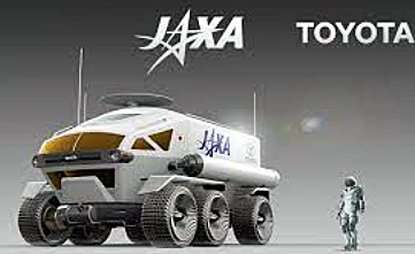QFD and ISO 16355 promotes the use of consumer and user research "in situ", which means in the actual place and time of use. We also call this going to gemba (the Japanese word for a "crime scene"!)
Let me share two recent stories that emphasize how important this will be in the future.
The Japanese car rental/sharing industry has been growing due to the offer of renting cars by the hour. These rental agencies are often located near train stations, including rural areas where there are fewer "last kilometer" transportation options. Pricing is based on a very cheap initial rental fee plus a costly per-kilometer distance charge.
Apparently many customers there are returning the rental cars without adding mileage as if they did no driving. It was not the case like they disliked the car nor the car had issues. The odd phenomenon was not a fluke but wide-spread, and puzzled two top companies who reported they were losing money because the customer rented the car for over 1-2 hours and only paid $4-$8 for the entire rental. At that rate, the capital costs of buying cars, plus the operating costs of staff, IT, and retail space could never be recovered.
In a gemba survey, they discovered that the customers were not using the rental cars for getting from point A to point B. Instead, they were using the car for secondary purposes such as taking naps, computer work, storing things, when nearby coin lockers were unavailable, charging their mobile phones and other devices, and even eating, talking, and streaming TV and movies. A few customers even explained they used the car for changing clothes for cos-play and to practicing rapping!
One of the best emerging gemba survey methods is called Net Promotor Systems (NPS). Carey Hepler of United Healthcare presented on this at the 2019 International QFD Symposium in Boise, Idaho USA. (Read an excerpt in the PDF brochure here). At United, Carey is combining the NPS survey that determines re-purchase/recommend-to-others with free-response questions as to "why" customers would recommend.
If product developers do not engage in such ongoing gemba research, their technology may not anticipate new customer use-cases, applications, and needs. Instead, products and services will become stale, unprofitable, and be at risk for market failure.
The second story involves Toyota's plans to build a Moon RV for lunar exploration. This recreational vehicle will permit two astronauts without requiring space suits to travel 6,000 miles on the moon's surface. [source: USA Today]
Since no such application or product currently exists, and the risk of failure could be life-threatening, how will they anticipate the necessary applications, astronaut needs, product and system functions, and allocate component costs appropriately?
Cost Deployment, one of the most under-utilized parts of QFD, is another powerful approach. Cost Deployment allocates product price minus required profits to the various product or service "components" that perform functions necessary to satisfy customer needs.
Since customers may not explain their needs or understand what function are necessary for them, such as in the case of the rental cars and the lunar RV, it can be difficult for developers to understand how to best allocate costs during the design process. Cost Deployment was created specifically to address this problem. It is detailed in ISO 16355 and the process is taught in the QFD Black Belt® training.
Developing new products and services in the user-centric, fast-changing markets and technologies of the future require a systematic, structured approach to get things right the first time. But the approach must allow for easy implementation and fast training. The Modern QFD methods of Blitz QFD® are the foundation of an easy and fast new product development method. Blitz QFD® is at the core of the QFD Green Belt® training).
For questions about the modern QFD methods and training opportunities discussed here and how you too can start applying them in your work, please contact the QFD Institute.


